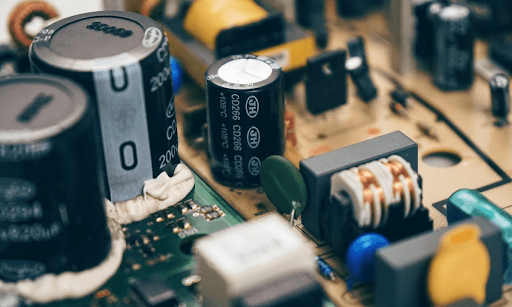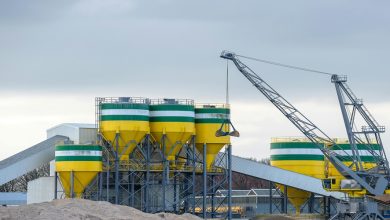Choosing Between Dry-Type and Liquid Transformers

According to Global Market Insights, the dry-type transformer market in North America held approximately 51% of the market share in 2022 and may reach USD 3.3 billion by 2032.
While this significant market presence underscores the growing preference for dry-type transformers, users have varying requirements across industries. By taking the time to know what makes a transformer right for a particular application, one can ensure a safe, efficient, and reliable choice.
In this article, readers will understand the essential differences between the two types of transformers. They will learn one’s advantages over the other, including tips and real-life applications and scenarios.
Understanding Transformers
Transformers are integral to electrical systems. They work by stepping voltage levels up or down. Understanding what differentiates one type from the other is essential in choosing the right type for the correct application.
Dry-Type transformers
Air or another gas works as the cooling medium in dry-type transformers rather than oil. They are famous for being the safer and more environment-friendly choice. After all, they don’t use any flammable substances. They are also self-extinguishing, which means they neutralize the risks of using liquid-type transformers.
For instance, a commercial building in an urban area may choose dry-type transformers to meet local fire safety regulations and reduce insurance costs.
Liquid-type transformers
Liquid-type transformers use oil or any other insulating liquid for cooling and insulation. Due to their efficient cooling properties, they typically fit high-capacity applications. According to the Electrical Engineering Portal, knowing the changeover point between the dry and wet types—500kVA to about 2.5MVA—is vital in choosing a transformer. Dry types have lower ratings, while wet types have higher ratings.
A power plant will likely opt for liquid-type transformers to manage high power loads and maintain stable operations under extreme conditions.
Advantages of Dry-Type Transformers
The benefits of dry-type transformers are varied. They are safe to use, friendly to the environment, and less expensive to maintain. All these advantages contribute to their versatility and reliability in one too many applications.
Safety
As mentioned, dry-type transformers do not catch on fire and have a flame-control feature, even in high temperatures or during electrical faults. Indeed, these qualities make them perfect for the strict fire and safety codes that buildings, such as schools and hospitals, are expected to follow. Many users prefer dry-type transformers thanks to their safety.
Environmental impact
Dry-type transformers are healthier for the environment since they have no harmful insulating fluids inside. Because of this, there is little risk of soil and water contamination. For instance, a green-certified commercial complex may use dry-type transformers to abide by environmental regulations and improve its sustainability credentials. This choice is in line with planet-friendly practices and reduces ecological hazards.
Maintenance
Keeping dry-type transformers in good shape takes much less maintenance than their liquid-filled counterparts. They do not need oil monitoring or replacement, making them easier to manage over time.
Dry-type transformers are worth considering if an organization wants to reduce maintenance costs and downtime. This choice is significantly less expensive and more helpful in boosting operational efficiency.
Liquid-Filled Transformer Advantages
Liquid-filled transformers are highly appreciated for their cooling efficiency and durability. They are best suited for applications and environments requiring high capacity.
Cooling efficiency
Liquid-filled transformers have superior cooling capabilities due to the oil or other insulating liquids. These liquids effectively dissipate heat, making these transformers ideal for high-capacity applications where heat management is crucial.
For example, an industrial facility with heavy machinery may decide on liquid-filled transformers to ensure efficient cooling and prevent overheating. It works great for maintaining optimal operations and reducing incidents of equipment failure.
Durability
Liquid-filled transformers are popular because they can endure severe environmental conditions. They are typically longer-lasting than dry-type transformers, making them ideal for long-term installations.
For outdoor installations and places with extreme weather conditions, liquid-filled transformers are more reliable, durable, and consistent in performance, even in difficult areas.
Cost-effectiveness
Liquid-filled transformers are usually less expensive for high-capacity installations. They also offer a better performance-to-cost ratio for large-scale operations, leading to substantial savings, whether during the initial set-up or long-term operations.
Large manufacturing plants typically use liquid-filled transformers to lessen their expenditures, thanks to their efficiency, durability, and long-term reliability in power distribution.
Quality and reliability are priorities when selecting a transformer to ensure uninterrupted power supply and safety. Trusted providers like ELSCO Transformers prioritize these aspects, offering products built to stringent standards for maximum durability and performance.
Their commitment to excellence ensures that their transformers meet or surpass industry requirements, providing customers with peace of mind. For those seeking a deeper understanding of transformer types, ELSCO’s blog offers an extensive comparison of dry-type versus liquid transformers, which helps in informed decision-making.
Making the Right Choice
When choosing between dry-type and liquid transformers, consider several factors to ensure the suitability of the one you prefer. Here are five tips that can come in handy as you make a decision:
- Operational demands – Understand your application’s load requirements and environmental conditions to ensure the transformer can handle them effectively.
- Space constraints – Check the space available for installation. Dry-type transformers usually take up more storage space than liquid-filled transformers.
- Safety priority – Safety should be the number one concern of anyone choosing the right type of transformer, depending on their intended use.
- Environmental impact – Consider the potential ecological consequences of each choice and balance them with benefits.
- Cost and maintenance – Factor in the initial and long-term maintenance expenses for each type of transformer. Consider factors like insulation properties, noise levels, and servicing accessibility.
Appreciating the differences between dry-type and liquid transformers requires knowledge of individual needs and factors affecting safety and environmental health. While dry-type transformers prioritize safety and eco-friendliness, liquid-filled ones excel in cooling and durability, particularly for high-capacity applications. With the right provider, you are assured of a quality, responsible choice.





